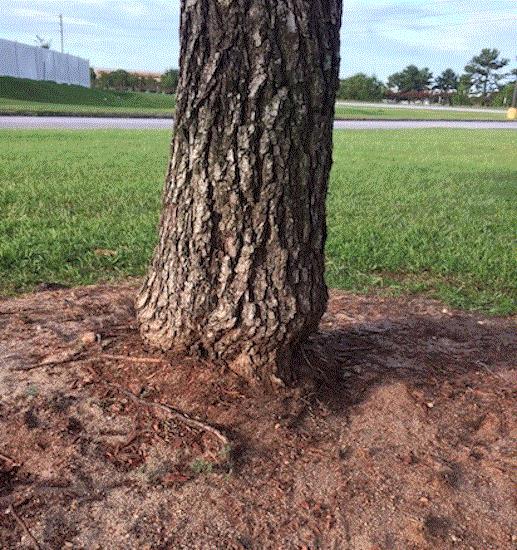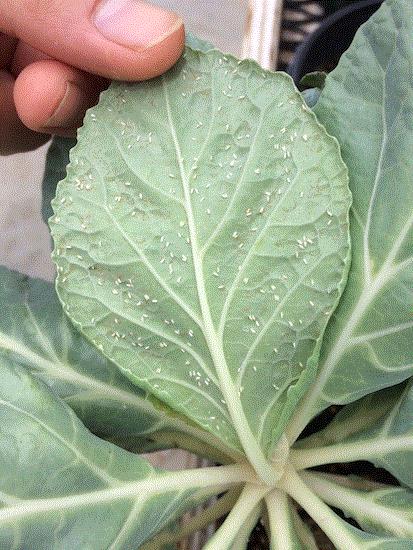Sym-Agro introduces Alluma
Sym-Agro, a Visalia, California-based company, is introducing Alluma this month. Alluma contains 15% garlic oil, and is listed as an insecticide, insect repellent and miticide. Alluma is also marketed as a “synergist” that can be tank-mixed with other insecticides and miticides to increase efficacy and repellency. Alluma isn’t registered with EPA because it’s a plant-based essential oil and claims 25(b) exemption under the Federal Insecticide, Fungicide, and Rodenticide ACT (FIFRA). Alluma has received organic certification from the Washington State Department of Agriculture.
The Alluma label lists indoor and outdoor uses on various fruits, nuts, vegetables, herbs, grains, grasses, mushrooms and many other crops. Use rates range from 1 to 3.5 pints per acre. Target pests include mites, soft-bodied sucking insects (such as aphids, leafhoppers, mealybugs, psyllids, scale crawlers and whiteflies), beetles, young caterpillars (such as cabbage looper, fruit worms, tomato pinworm and armyworms), maggots, thrips and leafminers. The product has no REI. PPE are coveralls, gloves, shoes and socks.

Both the product label and company literature indicate that Alluma has many modes of action. Alluma has both contact and translaminar (ingestion) activities. According to the label, when in contact with an insect, Alluma can interfere with the normal sensory functions and disguise plant odor, thus preventing egg laying. When ingested, Alluma acts as a chitin (synthesis, I assume?) inhibitor. Alluma leaves no odor on the plants, and it’s compatible with biological control agents.
I’m often concerned with phytotoxicity when using an essential oil. Alluma’s label recommends “do not apply to sensitive plants without testing,” but no sensitive plants are listed. If you use this product, do a phytotoxicity trial a few days before spraying on all crops.
I haven’t done any evaluations of this product, so I cannot verify the claims of mode of action or efficacy. Let me know how you feel about this product if you have tried it.

Ancora now in new formulation
Now, to a product I’m a little bit more familiar with. OHP has announced a new formulation for its Ancora biopesticide. Ancora contains the entomopathogenic fungus Isaria fumosorosea Apopka 97 strain. It’s OMRI-listed, and can be used in greenhouses, nurseries and landscapes. Ancora can be applied as a spray to foliage against aphids, whiteflies, spider mites, thrips, leafminers, mealybugs, psyllids and lygus bug. Ancora can also be applied as a drench to soil and medium for management of beetle grubs (including weevils and wireworms), thrips pupae and caterpillars. Growers can apply Ancora through chemigation and soil injection by following instructions and cautions outlined on the product label.

The new formulation is based on a diatomaceous earth carrier, which can be mixed more easily in water and sprayed through equipment without clogging filters. OHP recommends that growers using Ancora through foggers allow the product to decant in water for 20 to 30 minutes before mixing in a tank and spraying.
For more information on Ancora, click here.
Tree moats and mulch volcanoes
Ever heard of “tree moats?” What about “mulch volcanoes?” "Tree moats" refers to a moat-like ring of mulch created around a tree, whereas "mulch volcano" is the great pile of mulch that covers the base of a tree. Whether the terms elicit head shaking or head scratching, y’all should check out Joe Boggs’ (of The Ohio State University) fun article on Buckeye Yard and Garden onLine (BYGL).
I don't remember seeing anything resembling a tree moat or mulch volcano occurring in nature. Trees just don't grow and survive under this kind of torment. Unsurprisingly, tree moats and mulch volcanoes create lots of health problems for the affected trees—suffocation of roots, destruction of the majority of root systems, trunk girdling and increased hydrophobicity. Joe has descriptions and pictures of each of these problems in the article.

One issue associated with mulch volcanoes that Joe didn’t mention, but I’ve often observed, is trunk decay. As the mulch volcanoes decay or after they’re removed, we often find the trunk decayed, causing a very weak structure for trees—a danger to pedestrians and a potential liability to owners.
I often consider ignorance the most serious pest of plants. Tree moats and mulch volcanoes are modes by which ignorance injures a tree. They both create injuries and stresses to the trees. Insects that take advantage of declining tree health, such as scale insects and borers, have an easier time overcoming the defenses of the stressed trees. Pathogens also have an easier time invading the trees via the wounds. I’m not aware of any research that specifically addresses the potential pest problems associated with tree moats and mulch volcanoes, but that would be a cool research project, wouldn't it?
One thing I would disagree with Joe: If tree moats and mulch volcanoes make Ohio the “Land of the Bizarre,” most of the United States should also qualify for the nickname. I’ve seen variations of the same practices during my travels. They seem to be bizarre, but common practices.

JC's soapbox
This month, I wrote a piece for American Floral Endowment’s (AFE) newsletter on pesticide rotation for whitefly on poinsettia. You can access the article through the AFE WEBSITE, or by clicking HERE. While you are at it, think about the works AFE has contributed to the floricultural industry and consider becoming a contributor.
I included something I have been thinking about for some time, i.e. how to manage pests on stock plants. This is an excerpt:
“Producing a great poinsettia crop starts at the rooting stations. Propagators have a unique responsibility of avoiding resistance development in their operations because resistant populations “cultured” at the rooting stations can be passed on to their clients through infested cuttings. This is easier said than done. Growers demand pest-free cuttings. As a result, propagators have to rely heavily on insecticides to keep the stock plants whitefly-free and meet this “zero tolerance.” As we have witnessed in the past few years, such an insecticide-heavy approach of producing cuttings has not been particularly successful. The result is a not-so-pest-free product and a process that promotes pesticide resistance and difficulty in establishing biological control programs (due to pesticide residue).
I don’t think the “zero tolerance” approach in poinsettia cutting production is sustainable. Perhaps it is time for us to consider an alternative: poinsettia cuttings that have a very low number of non-resistant whiteflies that can be controlled with toys in our current toolbox. The “new paradigm” cuttings can be produced with a combination of chemical and biological pest control tools. Whitefly population on the stock plants can be maintained at a low level with frequent releases of parasitoids (Eretmocerus spp.) and predators (such as Amblyseius swirskii with supplemental food), as well as applications of entomopathogenic fungi, such as Beauveria bassiana and Isaria fumosorosea.
Only when the cuttings are to be harvested would the whitefly population on the stock plants be knocked down with insecticides. We can reduce the exposure of whiteflies to insecticides (and thus, the risk of resistance development) by limiting insecticide applications to the end of the crop cycle. The selection of insecticides at this stage depends on the time to harvest. If harvest is within 2 or 3 weeks, a medium drench with neonicotinoids (IRAC Group 4A), Altus (4D) or Mainspring (28) has enough time to spread through the canopy and bring down the whitefly numbers. If you prefer not to do medium drench, you can also make rotating foliar applications with neonicotinoids (4A), Altus (4D), Avid (6), Sanmite (21A), Kontos (23), Savate (23) and Mainspring (28). Whitefly populations that persist until a few days before harvest can be reduced with one application of Avid + pyrethroid (6 + 3A), Safari (4A), Sanmite (21A) or horticultural oil (unclassified).”

Changing the way we manage pests on stock plants is not a new idea, and I ain’t saying we should accept a box of cuttings with dozens of whiteflies flying out as soon as you open the box. I will not say what I’d suggested above is the one-and-only effective program. In fact, it may be totally insane. (Go ahead, it’s totally okay to call me crazy. I’ve been called worse.) I have many über smart colleagues out there and they have much better solutions than I do. But, I’m very concerned with the vicious consequence of this “insecticide treadmill” we’ve stepped on, so I’m just going to put myself out there and call for us to think about how to stop this machine.
Let’s talk about this.






Stepping off the soap box,

JC Chong
Associate Professor of Entomology at Clemson University
This e-mail received by 25,155 subscribers like you!
If you're interested in advertising on PestTalks contact Kim Brown ASAP!